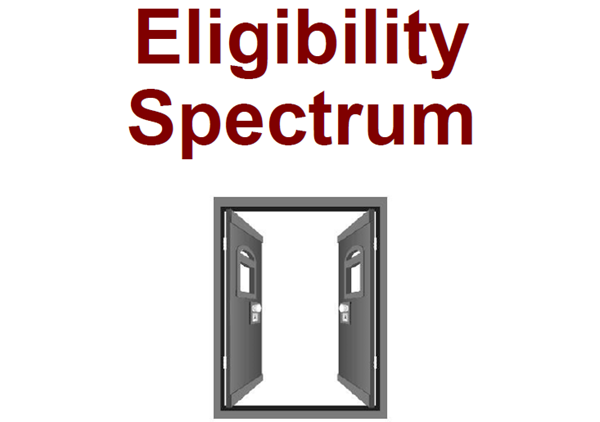The Eligibility Spectrum is a screening tool that Ontario children’s aid societies and Indigenous Child and Family Well-Being Agencies use to determine whether reports of actual or potential harm to children and youth should be investigated. Since its initial creation in 1995, the Eligibility Spectrum has aimed to assist child protection staff in making consistent and accurate decisions about a child, youth, or family’s eligibility for service.
Research suggests that Eurocentric parenting styles and values have been normalized through policies and practices that ignore the impacts of the legacies of colonialism embedded in all Canadian institutions. Ultimately, these values are reinforced through the child welfare system, including through tools like the Eligibility Spectrum. Qualitative data collected by the One Vision One Voice (OVOV) program through consultations and focus groups with child welfare practitioners further corroborate this understanding, implicating the Eligibility Spectrum directly in the disparities and overrepresentation of Black children and youth in Ontario’s child welfare system.
As part of the strategy to address the racial disparities and reconcile historical wrong-doings within the Ontario child welfare system, the Ontario Association of Children’s Aid Societies (OACAS), with the support of OVOV and in partnership with key sector and government stakeholders, committed to reviewing and updating the Eligibility Spectrum using an equity-centred lens. This work included community and sector-wide consultations, research conducted through the OVOV Disparity Mapping Project, and thorough analysis and review by the OACAS Service Team, OVOV, and subject matter experts.
The revised Eligibility Spectrum now acknowledges unambiguously the prevalence of systemic racism and oppression in the Ontario child welfare system and ensures equity-focused identity-based considerations are given as part of the assessment process. As part of our reconciliation efforts, the changes also include an update to support data ownership and sovereignty for First Nations, Inuit, and Métis communities, Bands, and Nations. These changes will further child protection staff’s ability to make not just consistent and accurate decisions, but also equitable ones, about the families they become involved with. Ultimately, this will support more equitable outcomes and will help to address the overrepresentation of historically marginalized children, youth, and families in child welfare. The intention is that this is just the first step towards revising the tool to better reflect the values and service delivery priorities of the Ontario child welfare sector.
“Incorporating an equity-focused lens to the Eligibility Spectrum is a step in the right direction. Centering equity is at the foundation of system-wide transformation of the child welfare system. This tool directly affects the lives of children, youth, and families, so these changes will have an impact.” -Keishia Facey, Program Manager, One Vision One Voice
“The Service Team at OACAS was so happy to be part of this project. This was an example of true collaboration across our organization and with key partners. It also demonstrates the child welfare sector’s willingness to evolve and their commitment to equitable clinical practice. Every incremental change, no matter how small, can shift practice significantly. This new version of the Eligibility Spectrum tool is evidence of that.” -Michelle Gingrich, Manager of Service and CPIN, OACAS
Download the English version of the Eligibility Spectrum here or the French here.
